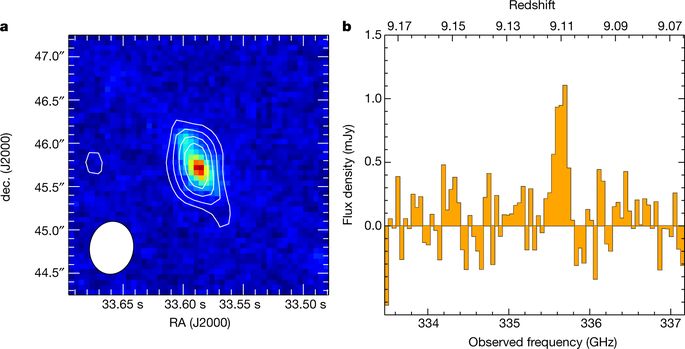Science Highlights - An ALMA Detection of Oxygen from a z=9 Galaxy
|
|
The combination of great sensitivity of ALMA and gravitational lensing allows us to spectroscopically identify extremely distant galaxies. In a recent study, Takuya Hashimoto and his collaborators make use of ALMA Band 8 to observe MACS149-JD1, a gravitationally lensed galaxy. The team has successfully detected the [OIII] 88-micron line at the redshift of z=9.1096 with a high significance level of 7.4 sigma. The Figure to the left contains the [O III] contours superposed on the HST H-band image of the galaxy and the [O III] spectrum. MACS1149-JD1 is currently the most distant galaxy with an accurate redshift based on emission lines and offers us a unique opportunity to understand the early star formation activity. Based on Spectral Energy Distribution analyses of ALMA, Hubble, and Spitzer data, the team has constructed the star formation history of the object. Excitingly, they have found that MACS1149-JD1 has initiated its star formation at z~15, corresponding to 250 Myr after the Big Bang.
|

